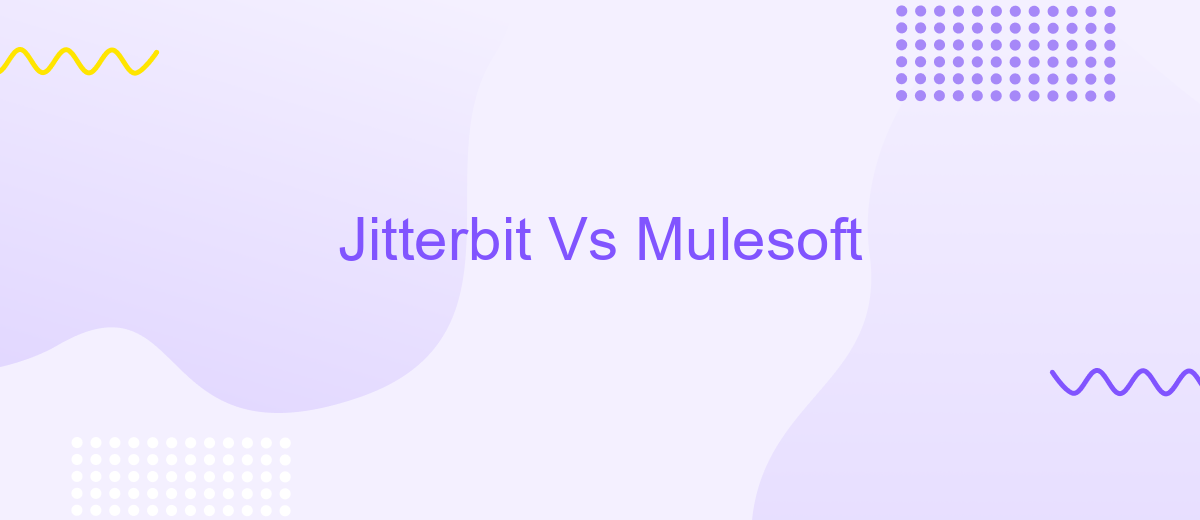Jitterbit Vs Mulesoft
When it comes to integrating diverse systems and applications, businesses often find themselves choosing between Jitterbit and MuleSoft. Both platforms offer robust solutions for connecting data, applications, and devices, but they differ in terms of features, pricing, and ease of use. This article aims to provide a comprehensive comparison of Jitterbit and MuleSoft to help you make an informed decision.
Introduction
In the rapidly evolving landscape of business technology, integration platforms have become essential for seamless data flow and operational efficiency. Jitterbit and MuleSoft are two prominent players in this domain, each offering robust solutions for connecting various applications, data sources, and APIs. Both platforms aim to simplify the integration process, but they come with distinct features and capabilities that cater to different business needs.
- Jitterbit: Known for its ease of use and quick deployment, Jitterbit provides a user-friendly interface that allows even non-technical users to create integrations efficiently.
- MuleSoft: Renowned for its comprehensive API management and extensive customization options, MuleSoft is preferred by enterprises needing complex, scalable integrations.
Choosing the right integration platform can significantly impact your business operations. For instance, ApiX-Drive offers another alternative, focusing on automating routine tasks and simplifying the integration process with a wide range of pre-built connectors. Understanding the strengths and limitations of Jitterbit and MuleSoft will help you make an informed decision that aligns with your organizational goals.
Key Features Comparison

Jitterbit and Mulesoft are both powerful integration platforms, but they offer distinct key features that cater to different needs. Jitterbit excels in its intuitive, user-friendly interface, making it accessible for users with varying technical expertise. Its Harmony platform provides seamless API creation and management, along with robust data transformation capabilities. Jitterbit also offers pre-built templates and connectors, which significantly reduce the time required for integration projects. Additionally, Jitterbit's real-time analytics and monitoring tools empower users to optimize their integrations effectively.
On the other hand, Mulesoft's Anypoint Platform is renowned for its comprehensive API management and extensive connectivity options. Mulesoft provides a unified integration experience with its API-led connectivity approach, ensuring high scalability and flexibility. It supports a wide range of protocols and standards, making it suitable for complex enterprise environments. Mulesoft also offers advanced security features and detailed analytics for monitoring API performance. For users seeking additional integration solutions, services like ApiX-Drive can complement these platforms by providing automated workflows and easy integration setups, further enhancing the overall efficiency of integration processes.
Pricing and Support

When comparing Jitterbit and Mulesoft, pricing and support are critical factors to consider. Both platforms offer a range of pricing tiers, tailored to different business needs and budgets. Jitterbit typically provides more straightforward pricing plans, making it easier for businesses to forecast costs. Mulesoft, on the other hand, offers a more complex pricing structure based on usage and features, which can sometimes make budgeting more challenging.
- Jitterbit: Offers a clear, tiered pricing model with options for small, medium, and large enterprises.
- Mulesoft: Utilizes a usage-based pricing model that can be customized but may lead to unpredictable costs.
- ApiX-Drive: Provides an affordable and transparent pricing model, making it an excellent option for businesses looking for cost-effective integration solutions.
Support is another crucial aspect where these platforms differ. Jitterbit is known for its responsive customer support and comprehensive documentation, which helps users troubleshoot issues effectively. Mulesoft offers extensive support options, including premium support packages, but these come at an additional cost. ApiX-Drive also stands out with its reliable support and easy-to-follow guides, ensuring smooth integration processes for businesses of all sizes.
Use Cases and Integrations

Jitterbit and Mulesoft are two prominent integration platforms that cater to various business needs. Jitterbit is known for its user-friendly interface and rapid deployment capabilities, making it suitable for small to medium-sized businesses. Mulesoft, on the other hand, offers a robust and scalable solution ideal for large enterprises with complex integration requirements.
Both platforms support a wide range of use cases, from simple data synchronization to complex business process automation. Jitterbit excels in scenarios where quick and easy integrations are required, while Mulesoft shines in environments demanding high performance and extensive API management.
- Real-time data synchronization
- API management and development
- Cloud and on-premises integration
- Business process automation
For those looking to streamline their integration processes further, services like ApiX-Drive can be invaluable. ApiX-Drive offers a no-code platform that simplifies the setup of integrations between various applications, reducing the need for extensive technical knowledge. By leveraging such tools, businesses can achieve seamless data flow and enhanced operational efficiency.
Pros and Cons
Jitterbit offers a user-friendly interface and robust data transformation capabilities, making it a strong choice for businesses seeking rapid integration solutions. Its intuitive design allows users to quickly set up connections and automate workflows without extensive coding knowledge. However, Jitterbit can become costly for larger enterprises due to its pricing model, and some users have reported occasional performance issues with complex integrations.
Mulesoft, on the other hand, is renowned for its comprehensive and scalable integration platform, which is ideal for large-scale enterprises with extensive integration needs. It provides a wide range of connectors and advanced features that cater to complex business environments. Nevertheless, Mulesoft's complexity can be a drawback for smaller businesses or those lacking specialized IT staff. Additionally, the learning curve can be steep, and the initial setup may require significant time and resources. For businesses looking for a more straightforward integration solution, services like ApiX-Drive can be a viable alternative, offering an easy-to-use platform for automating workflows and connecting various applications without deep technical expertise.
- Automate the work of an online store or landing
- Empower through integration
- Don't spend money on programmers and integrators
- Save time by automating routine tasks
FAQ
What are the main differences between Jitterbit and Mulesoft?
Which platform offers better support for API management?
How do the pricing models of Jitterbit and Mulesoft compare?
Which platform is easier to implement for a non-technical team?
Are there any third-party services that can help with the integration and automation setup?
Apix-Drive will help optimize business processes, save you from a lot of routine tasks and unnecessary costs for automation, attracting additional specialists. Try setting up a free test connection with ApiX-Drive and see for yourself. Now you have to think about where to invest the freed time and money!


